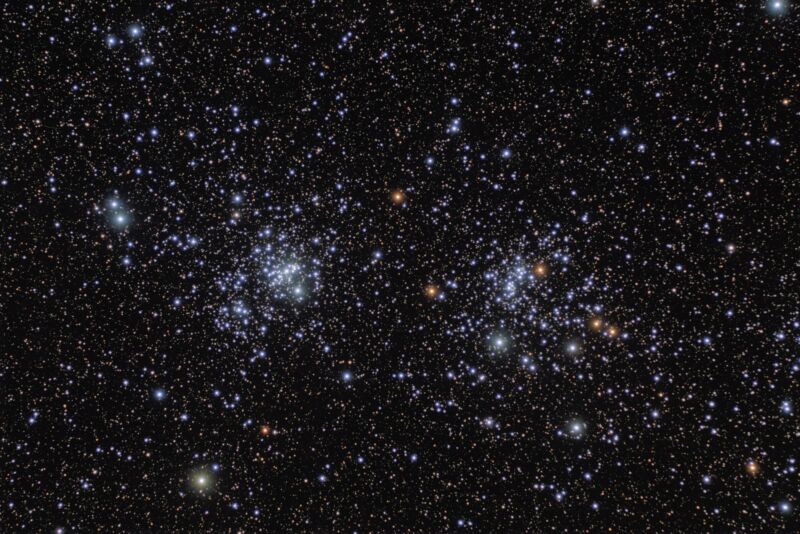
Good morning. It's November 20, and today's photo showcases a double cluster of stars in the constellation Perseus.
These two clusters are quite close to one another, within a few hundred light-years. However, they lie much farther from Earth—each about 7,500 light-years away—so the stars must be very bright for us to be able to see them. And indeed they are, as the clusters are made up primarily of young, very hot supergiant stars.
You can see these clusters with the naked eye from a very dark area, but most of us are probably going to at least want a good pair of binoculars to spy them out. EarthSky has a helpful guide for finding them in the night sky.
This photograph was taken by Markus Noga with a 4-inch (100 mm) refractor telescope. "This image was taken from my backyard near Heidelberg, Germany, this year," he told me. "We had a lovely string of clear nights in late September and early October. Now that I have purchased additional astro gear, we are of course in for protracted rains."
We hope the skies clear up for you soon, Markus.
Source: Markus Noga.
Do you want to submit a photo for the Daily Telescope? Reach out and say hello.



















